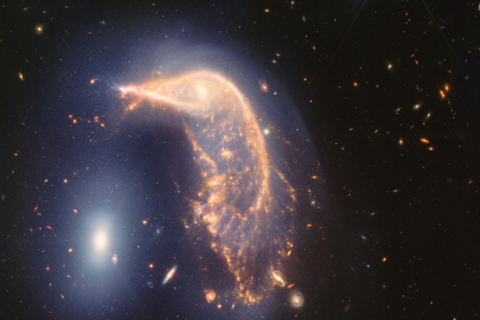WASHINGTON — Hello DMV from cruise ship Azamara Journey at sea in the Indian Ocean.
Wednesday, Jan. 31, half of the planet will be treated to a “super blue blood moon” total lunar eclipse. That’s the good news. The bad news is that it will not be that great of an event for the D.C. area. But don’t fret, we will see the entirety of the Jan. 21, 2019 total lunar eclipse.
“So for viewers in New York or Washington, D.C., the Moon will enter the outer part of Earth’s shadow at 5:51 a.m., but (lunar blogger Gordon) Johnston said it won’t be all that noticeable. The darker part of Earth’s shadow will begin to blanket part of the Moon with a reddish tint at 6:48 a.m. EST, but the Moon will set less than a half-hour later,” NASA said in a news release.
“So your best opportunity if you live in the East is to head outside about 6:45 a.m. and get to a high place to watch the start of the eclipse — make sure you have a clear line of sight to the horizon in the west-northwest, opposite from where the Sun will rise,” Johnston said in the release.
I have witnessed total lunar eclipses under these types of conditions before and they are difficult. If you want to try to see the eclipse, the best place to do so will be the western facing turnouts of the Shenandoah National Park (SNP). The turnouts provide a decent W/NW horizon and elevation for a good view of the setting/eclipsed Moon. Binoculars will help immensely.
Before going, you have to check the weather and road conditions along Skyline Drive to make sure it is open. Please note that facilities are closed for the season at SNP.
OK, so the viewing won’t be that great for the East Coast but why does this event have such a long name with “super,” “blue” and “blood,” instead of just “total lunar eclipse”? Great question and here’s the answer: This is our second “super full moon” of not only 2018 but January, as well which answers the “super” and “blue” parts of the title.
“Blood moon” is a phrase used to describe the reddish color the moon takes on during the totality phase of the eclipse. The color is caused by sunlight passing through the Earth’s atmosphere and falling upon the surface of the moon. Because our planet is totally blocking out the light of the sun, this reddish color — just like we can see at sunrise/sunset here on Earth — is the only light reaching the moon.
An astronaut on the moon would see a red ring around the entire Earth — all of the planet’s sunrises and sunsets occurring at once. During this eclipse, scientists will be conducting studies of the moon. NASA Goddard will also be preparing Lunar Reconnaissance Orbiter (LRO) — humanity’s only active lunar mission — to endure the loss of sunlight to the intrepid’s spacecraft’s solar panels.
Just how rare is this combination of “super blue blood moon”? Forbes explains the statistics behind the event and concludes that, “With all that, we can combine this information to arrive at how frequently we expect all of these to occur together:
- Blue Moons make up about 3 percent of all full Moons,
- Supermoons are approximately 25 percent of all full Moons, and
- Total lunar eclipses occur during 5.6 percent of full Moons, meaning that a Blue, Super, totally eclipsed Moon occurs with 0.042 percent of full Moons: once every 2,380 full Moons or so. On average, that corresponds to once every 265 years!”
To see the whole eclipse you can tune in online beginning at 5:30 a.m. EST on Jan. 31, for a live feed of the moon on NASA TV and NASA live. You can also follow at @NASAMoon.
I will be at sea off the southern coast of Australia headed toward Kangaroo Island and will witness the entire eclipse if skies are clear. I will post any pictures I get to @WTOP.
Follow Greg on Twitter @skyguyinva and his daily blog to keep up with the latest news in astronomy and space exploration. Email him at skyguyinva@gmail.com.






